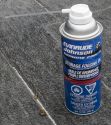Blog
Spring Time Boat Maintenance
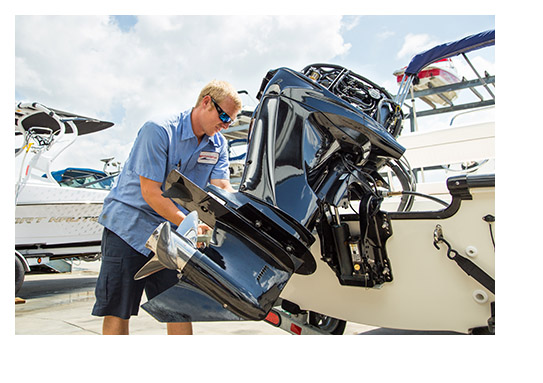 The ice is gone and the weather is warming up here in Michigan, which means it won't be long before people start putting their boats back in the water for the summer months. But before they do, there is some spring time maintenance that should be taken into consideration to help prevent problems that may eventually keep you off of the water further into the season.
The ice is gone and the weather is warming up here in Michigan, which means it won't be long before people start putting their boats back in the water for the summer months. But before they do, there is some spring time maintenance that should be taken into consideration to help prevent problems that may eventually keep you off of the water further into the season.
One of the first things you should do is inspect your fuel system for any leaks or damage. While doing this, pay close attention to the fuel hoses, connections, and the tank. When looking at the fuel hose, look for any sign of softness, brittleness, or cracking that may have happened since last season. You will also want to replace any components that may be bad as well as make sure that all clamps and fittings are tight. The last thing to keep in mind dealing with your fuel system is the fuel you put into your boat. You do not want to fill your tank with any fuel that has more than 10% ethanol because it will eventually cause damage to your motor.
Next, you will want to check your propeller for any nicks, dents or distortion. If you run your boat with a damaged prop, it can cause quite the vibration and damage your drive train. You will also want to check and see if it is on securely and that the bearings do not need to be replaced. Along with your prop, inspecting your prop shaft is not a bad idea either. With this, you will want to make sure that the prop shaft is still straight and does not have a slight bend in it from possibly hitting your prop on any unseen hazards the previous season.
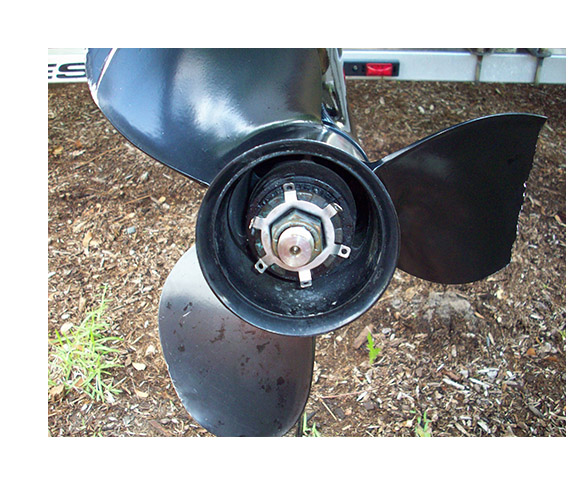
After that, you will also want to check all of the fluid levels such as oil, power steering, trim reservoir, and coolant. Before going out, you are going to want to make sure that the engine oil, filter, and drive lubricants get changed if they had not been changed during the winterizing process of your boat at the end of the last season.
Lastly, you should check and go through all of your safety gear that is on the boat. You will want to make sure that you have plenty of life jackets on board to account for all of the passengers you intend to have or can have. It's not only making sure that there is enough life jackets, but making sure that the life jackets will properly fit your passengers. This means making sure you have children sized life jackets for any youngster you plan to have on your boat. Adult life jackets will not be safe for children to use. After you have all of your flotation devices accounted for, make sure that you have the right class fire extinguishers, that they are fully charged, and that they are stowed in an easily accessible place.
Going through this check list for spring time maintenance is not mandatory, but it may save you some headache down the road one way or another. Whether it's a prevented mechanical failure or saving yourself a ticket because you have the proper flotation devices on your boat, it's worthwhile. Going through your boat and making sure that these things are checked before your season kicks off will only help ensure that you have a great summer on the water with friends and family.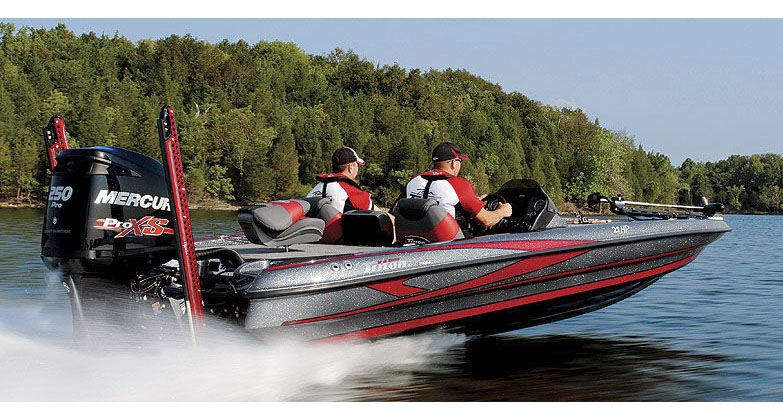
Outboard Jets and Some Things To Think About
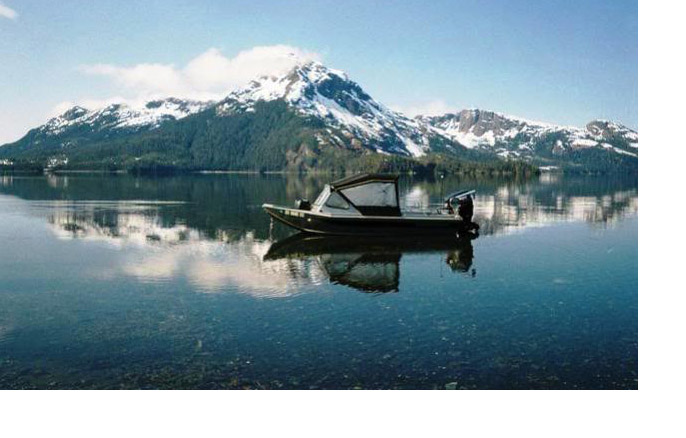 If you chase steelhead or salmon in any one of our river systems, chances are your sled has an outboard jet drive motor on it or you wish it did. Jet drive outboards are the motor of choice for almost every river fisherman for the simple fact that they allow anglers to motor through skinny water that is too shallow for a propped outboard. They also eliminate the chance of damaging a prop and lower unit on unseen hazards such as logs or unexposed rocks. With jet drives becoming more common on rigs in the Midwest, there are a few important factors that should be taken into consideration to achive top performance.
If you chase steelhead or salmon in any one of our river systems, chances are your sled has an outboard jet drive motor on it or you wish it did. Jet drive outboards are the motor of choice for almost every river fisherman for the simple fact that they allow anglers to motor through skinny water that is too shallow for a propped outboard. They also eliminate the chance of damaging a prop and lower unit on unseen hazards such as logs or unexposed rocks. With jet drives becoming more common on rigs in the Midwest, there are a few important factors that should be taken into consideration to achive top performance.
One of the first thngs to think about has to be with the width of the boat. Jets tend to run better on boats with a width of 48” or more. This is because the wider the boat is at the bottom, the higher the hull sits in the water and creates less drag. The second would have to be the weight to power ratio which will determine getting the boat onto plane. Jets are unlike a propped outboard in terms of power because once an outboard is jetted out, it loses 30% of that powerheads original horsepower. There is also no way to play with the RPM’s due to the boat having a heavier payload. When the payload is too heavy on a propped motor, you can simply change to a lower pitched prop so that you can get to the recommended RPM’s for that motor. There is no wiggle room with this on a jet. That's why taking your regular payload into consideration will determine the amount of horsepower needed to power your boat and get it on plane.
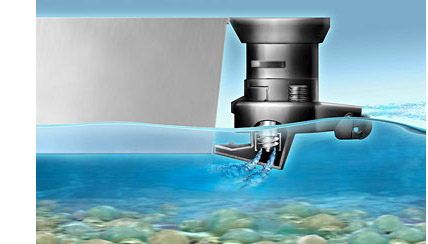 Almost every jet drive pump on the water today, no matter what brand motor, is made by a single company: Outboard Jets out of San Leandro, California. The company was started in 1960 by Dick Stallman, who worked closely with the Wooldridge family to form the product that you know today as the jet drive. Today, Outboard Jets build over 80 different models to fit 6 of the top name outboard manufacturers in the marine industry. One of the things Outboard Jets recommend is that a jet drive motor should be rigged on a boat that has a slight deadrise of 6 - 10 degrees for the best overall performance. This is important because this slight dead rise, or “V”, makes for a smooth ride and splits air filled water before it reaches the jet intake and causes cavitation.
Almost every jet drive pump on the water today, no matter what brand motor, is made by a single company: Outboard Jets out of San Leandro, California. The company was started in 1960 by Dick Stallman, who worked closely with the Wooldridge family to form the product that you know today as the jet drive. Today, Outboard Jets build over 80 different models to fit 6 of the top name outboard manufacturers in the marine industry. One of the things Outboard Jets recommend is that a jet drive motor should be rigged on a boat that has a slight deadrise of 6 - 10 degrees for the best overall performance. This is important because this slight dead rise, or “V”, makes for a smooth ride and splits air filled water before it reaches the jet intake and causes cavitation.
Cavitation can be common occurence in rough waters or harsh conditions as well as those who run a flat bottom sled with no dead rise. With that being said, there are a few solutions to help prevent cavitation from happening. One solution is to install jet intake fins that can be bought as an after market accessory. These fins are not only easy to install, but they can be an economical and simple solution for directing a larger volume of water and reducing the amount of air getting to the intake. They also provide a little more grip in tight turns or rough waters.
Another easy to install solution to cavitation is a transom jack. Transom jacks come in both manual or hydraulic styles and many different sizes. Transom jacks allow you to adjust the height of the motor so that if there is a bit of chop, you can lower it into the water more to get a better intake or water. They also allow you to adjust the intake foot several inches back from the transom for better water flow and efficiency. Some downfalls to transom jacks are that they will add more torque to the transom as well as shift the weight more towards the transom. Because of this weight shift, you may need to adjust your boats load to evenly disperse the weight again.
Outboard jets rely on a constant flow of water that is free of air pockets for them to run efficiently. Boats with keels will carry pockets of air all the way back to the intake causing the jet to run inefficiently. One way around this is to remove a section of the center keel about two feet or so from the stern of the boat. This should create a nice flow of water that is wider than the jet intake.
Another common problem with outboard jets is back spray. This happens when water sprays off of the transom and the foot, which may cause for a wet ride or produce cavitation. This can be fixed by welding an aluminum plate that is just a few inches wider that the intake foot to the transom of the boat where the jet sits. Some of the boat builders acctually fabricate these plates into their original designs.
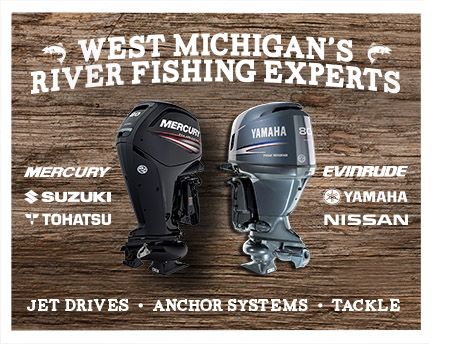 The use of outboard jets is definitely on the rise in the Midwest and we will be seeing a lot more of them on the rivers in the years to come. If you are an angler that is thinking about purchasing an outboard jet, these are some great things to keep in mind when looking. Van’s Sport Center sells quite a few new and used jets thoughout the year and our salesman here has quite the experience with them being a river angler himself. Based on your boat and the payload you plan to run, Van’s can get you set up with exactly the right amount of power for the right price so you can get out there and chase some of the greatest trophy fish Michigan has to offer.
The use of outboard jets is definitely on the rise in the Midwest and we will be seeing a lot more of them on the rivers in the years to come. If you are an angler that is thinking about purchasing an outboard jet, these are some great things to keep in mind when looking. Van’s Sport Center sells quite a few new and used jets thoughout the year and our salesman here has quite the experience with them being a river angler himself. Based on your boat and the payload you plan to run, Van’s can get you set up with exactly the right amount of power for the right price so you can get out there and chase some of the greatest trophy fish Michigan has to offer.
Yamaha Outboards SHO Off Once Again
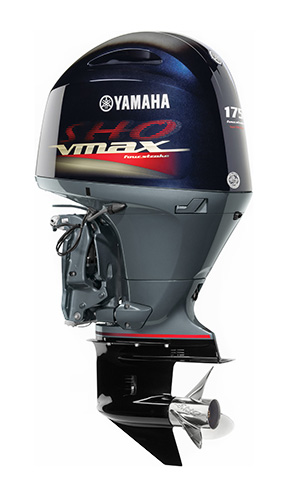 Yamaha Outboards have done it once again by engineering another game changing motor for the boating industry. Yamaha will be introducing four new SHO four-stroke models for the 2015 season from the range of 115 to 250hp engines. The new SHO line of motors are designed to meet the needs of all freshwater applications, such as mid-sized boats, pontoon boats, and offshore boats.
Yamaha Outboards have done it once again by engineering another game changing motor for the boating industry. Yamaha will be introducing four new SHO four-stroke models for the 2015 season from the range of 115 to 250hp engines. The new SHO line of motors are designed to meet the needs of all freshwater applications, such as mid-sized boats, pontoon boats, and offshore boats.
“What made us strong in salt water is feature-rich product,” said Yamaha Marine Group president Ben Speciale. “So we see that trend moving into fresh water at a more rapid pace. We are focusing more on providing that feature-rich product to that freshwater segment. We’re going after that freshwater market in a strong way.” The Mid-west has even been described as a priority for sales and service, Speciale mentioned.
The new additions to the Super High Output line will be the V MAX SHO 115hp and the V MAX SHO 175hp outboards. There will also be two extra long, 25” shaft versions of the current 150 and 250 V MAX SHO engines. The V MAX SHO motors come equipped with a 4.2L big-bore design that sends it out of the hole up to 13% faster than its two stroke competitors. These motors also have a redesigned cowling, engine bracket and lower engine pan, that got every ounce of weight shaved off that they could, without compromising the durability of the motor itself. In the end, the V MAX SHO weighs in at 505 pounds, a whopping 34 pounds lighter than the previous two stroke V MAX motor designs.
Along with the new SHO models being offered in April, Yamaha will also bring back two improved models, one being their most popular seller, the F150 and the other being the F8. Some of the changes to the F150 are improvements to the clutch, which will provide for smoother shifting and the other change is a new trolling feature. The trolling feature will let the operator increase revolutions per minute in 500 rpm increments.
These new models will become available for purchase in April of 2015 from any proud Yamaha outboard dealer in your area. If you are interested in any of the new Yamaha V MAX SHO lineup, stop into Van’s Sport Center and talk to our salesman Tom about re-powering your boat with new technology that is geared towards freshwater applications.
Van’s Helps Out Local Fishermen By Carrying Essential Lake And River Fishing Tackle


You know Van’s Sport Center for our selection of outboard motors, marine parts and accessories. But we’ve gotten to know many of you for your fish stories when you drop by our Grand Rapids store. Frankly, we’ve heard too many of your “One That Got Away” stories. So we decided to help you do something about that.
Van's Sport Center is now carrying a but essential tackle selection for a number of reasons besides helping you catch the Big One. First, and probably most obvious, we deal with a variety of boaters and fishermen who swing through the shop on a regular basis for service, new and used outboard purchases, marine parts, and other boat accessories. We hope that by having some basic tackle here we can supply them with the ability to "one stop shop" on their way to the lake or river.
Secondly, the area on the Northwest side of Grand Rapids is missing a tackle shop with the closing and moving of tackle shops in the area.
Lastly, Van's doesn't intend on carrying a huge variety of tackle like some of the larger stores in the Greater Grand Rapids Area. Instead, we hope to stock the items that anglers need or can't find consistently at other stores. Some of the big box tackle stores don't carry the smaller brands that we stock, and if they do, they seem to be missing specific items that anglers actually need. In the long run we hope that our selection of quality items and consistency of stock will even attract some tackle customers who don't currently use us for boating needs.
Currently we are carrying name brands tackle that include: Yakima, Blackbird/Redwing Tackle, Raven, and Brad's Killer Fish Gear. We are also a dealer for Gary Yamamoto and have access to just about any tackle brand made.
We are not stocking a large quantity of tackle because we’re not trying to become a tackle store. Instead, we are going to focus on the basic needs and most popularly purchased items for our customers who spend time on the water fishing. This may include certain brands of tackle, colors, or sizes, depending on what's "hot" for each season. We look to have those heavily sought after items in stock and ready to go for customers who may need to make a last minute stop on the way to the water. For our river anglers in particular, we aim to keep the terminal tackle items stocked to make us a one stop shop for their needs whether they are regular Van's customers or are from out of town just passing by Alpine Avenue on their way to rivers north or south of Grand Rapids.
Yes, the tackle selection will be available year round. We will stock our shelves according to the fishing seasons with bass, walleye and panfish tackle available in the spring and summer months. During the fall, winter, and earlier spring months we will have a special selection of river tackle for salmon, trout, and steelhead anglers. This is a niche that we want to specialize in for customers who need specific tackle for river fishing that is hard to find elsewhere. We'll stock popular split shot, hooks, floats, line and other terminal tackle, along with plugs (diving body baits), specifically for river fishermen. Both boat anglers and shore anglers will benefit from shopping our selection of river tackle.
With the 6th Street Dam just a few miles away and our location being on the way north and west for many river fishermen, we are in a great location to cater to their needs.
You’re always welcome to stop by Van’s Sport Center on the way back and tell us about the big ones that did NOT get away.
Coming for Freshwater Boaters in 2015: Four New Yamaha Outboards Just for You
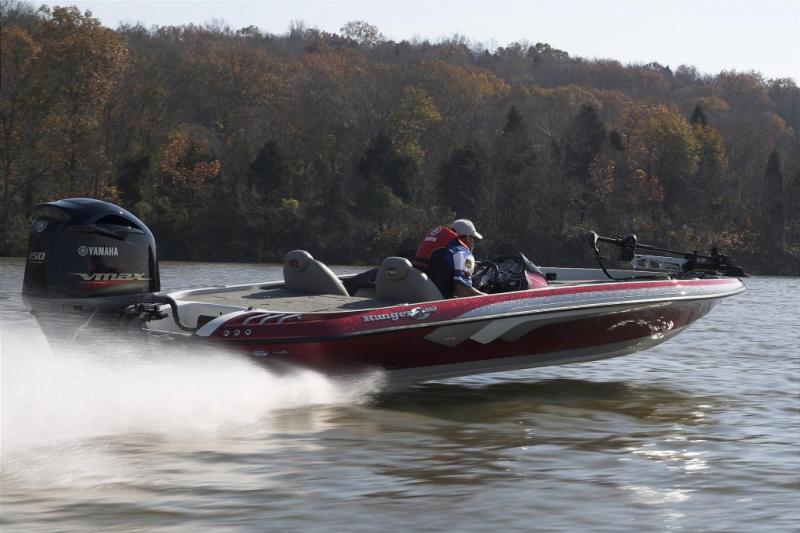
At its annual product announcement for the media Oct. 10 in Chattanooga, TN, Yamaha Marine Group announced the planned 2015 release of four new models of 4-stroke outboards, all engineered to meet boaters’ needs in the freshwater market.
The new outboards will range from 115 to 250 horsepower.
The new models that Yamaha introduced were the Super High Output lineup: the V MAX SHO 115 and V MAX SHO 175 and the 150X and 250X VMAX SHO. The 175X and 250X models are 25-inch shaft versions of the current V MAX SHO engines sporting the same horsepower. Yamaha officials told media the new outboards are planned to be on the market in April.
These outboards are designed to deliver top-end speed, a performance characteristic important to freshwater boaters. It’s a performance trait better suited for the generally lighter boats on freshwater. Yamaha sees the Midwest as a key target for sales and service.
Yamaha Marine also announced improved versions of the F150 and F78 outboards. The company’s best outboard, the F150 will receive improvements to the clutch for smoother shifting and a variable trolling feature, allowing the drive to increase revolutions per minute by increments of 500-rpm.
Look for Yamaha’s new outboards at Van’s Sport Center this spring.
How to Winterize Your Boat to Avoid Springtime Damage
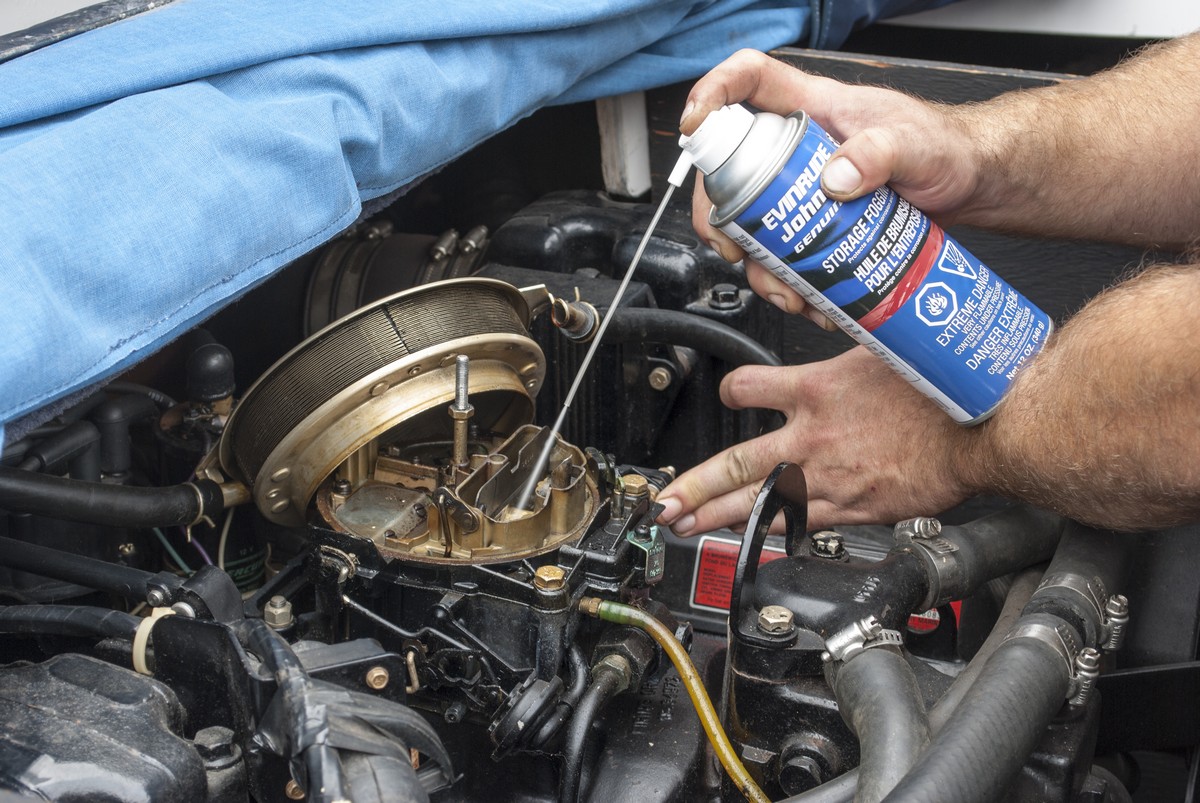 With the boating season coming to a close, it's time to start thinking about preparing your boat to face the freezing temperatures and harsh conditions of a northern winter.
With the boating season coming to a close, it's time to start thinking about preparing your boat to face the freezing temperatures and harsh conditions of a northern winter.
Why Winterizing is Important
The purpose of winterizing your boat is to prevent the potential damage of leaving water in dangerous places when freezing temperatures arrive. When water freezes, it can expand almost 9%, which is enough to place substantial pressure on a boat's external frame and internal structure. Repairing freeze damage is a large expense, and some people are forced to replace their engine completely. Northern winters come early, so don't procrastinate winterizing your boat.
The Winterizing Process
While the ideal winter scenario is placing your boat in a temperature controlled, covered boat storage area, this service is expensive. You can take care of the boat yourself by following a few simple procedures. These steps will ensure your boat endures the biting temperatures in coming months.
To properly winterize your boat, you must:
- Get rid of all water. This is the most crucial part of winterizing. Drain all water from pipes, plumbing lines, exhaust manifolds, sewage tanks, and most importantly, the engine. Any water left to freeze in these areas can cause significant and costly damage to your boat during winter.
- Add a fuel stabilizer to your fuel. Make sure the stabilized fuel is distributed throughout your fuel system.
- Lubricate the engine. Fog the cylinders with a fogging oil. Grease any joints or bearings.
- Remove the drain plug. This step is important for ashore storage because it provides drainage for any water entering the boat. Storing your boat ashore in cold winters is critical. Since the lakes freeze, boats are vulnerable to severe damage if they remain in the water. Remember to replace the drain plug when springtime arrives!
- Find a good cover. Make sure your cover is designed to handle the extra weight of snow build-up. You'll need a snug fit to keep unwanted visitors, like rodents, off the boat. Moth balls can be a good deterrent for unwanted visitors.
- Store at an angle. Find a way to raise the bow enough to create a slight angle. This encourages proper drainage throughout the winter.
Winterizing an I/O:
Winterizing an Outboard:
Boat owners, take the proper precautions to guarantee your boat survives the winter. To learn more about proper winterizing techniques, contact the boat experts at Van's Sport Center!





























